Proving Radio Works with Measurement: Welcome To The Golden Age Of Radio Attribution
Four executives from companies leading the radio attribution revolution presented brand new studies and insights on a panel called “Proving Radio Works: Attribution and Measurement” at Radio Ink’s Forecast 2020 conference yesterday.
Here are some of the highlights:
1. LeadsRx: An auto dealer attribution study of 300+ auto retailers and 1.8 million AM/FM radio ads finds AM/FM radio drives a +17% lift in dealer site traffic.
Jeff Keenan, SVP of Media Attribution and Co-Founder of LeadsRx, the multi-touch attribution firm measuring website traffic response to advertising, presented Five Attribution Secrets For Automotive Advertisers, a study commissioned by iHeartMedia looking at how AM/FM radio generates auto dealer website traffic
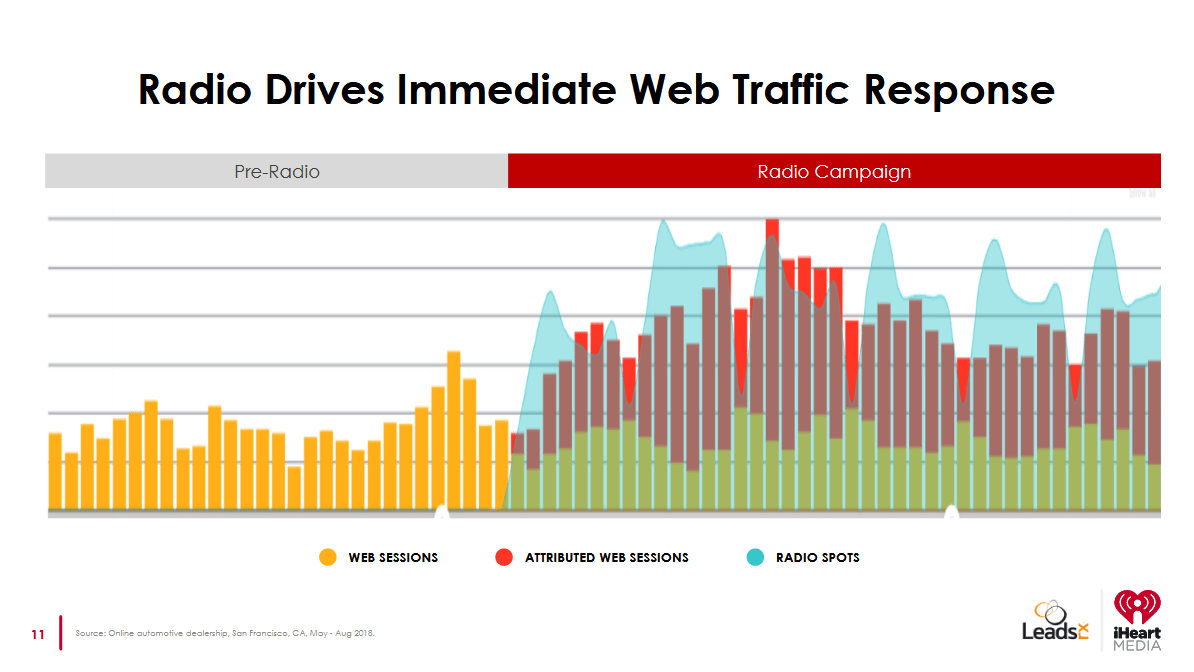
- AM/FM radio ads cause fast site traffic: Within ten minutes of hearing a commercial, traffic occurs.
- More ads = more results: Running ten AM/FM radio ads per day generates two times greater dealer web traffic response.
- Daytime is prime time for online auto shopping: 6AM-7PM web traffic response is two times greater than nights and overnights.
2. LeadsRx: Seven-day campaigns crush three-day flights with 2X the site traffic.
The biggest lift in auto dealer site traffic comes from ads spread over seven days versus three days. The site traffic lift of three-day auto dealer campaigns was 10%. Seven-day campaigns generated a 19% lift in auto dealer site traffic.
A myth exists in the retail advertising world that says, “Most people shop for big ticket items towards the end of the week. As such, only run ads Thursdays through Saturdays.” The “Thursday through Saturday” campaign is commonly accepted as a best practice.
Data slays mythology. LeadsRx findings invalidate this misconception. Seven-day buys generate more results than three-day buys.
What’s the secret? Higher reach. As days and dayparts are expanded, reach grows. The greater the reach, the greater the number of people who will visit the retailer’s website. Erwin Ephron, the father of modern media planning, famously advised, “It is better to remind the many, than lecture the few.”
The new marketing account strategy book How Not To Plan: 66 Ways to Screw It Up from Les Binet and Sarah Carter offers these recommendations:
- “Always aim to get more customers from all segments of the market. It’s the main way brands grow.
- Talk to everyone who buys your category. Talk to them regularly. Advertising memories fade.
- Go for reach, rather than frequency. Reach as many category buyers as possible.
- Don’t target too narrowly. It may be efficient, but it’s rarely effective. Tight targeting means low sales and profits.”
3. Edison Research: AM/FM radio has a 76% share of ad-supported audio.
Tom Webster, SVP of Edison Research, presented new data from Edison’s just-released Q3 2019 “Share of Ear” study. Edison found that 57% of all persons 13+ time spent with audio is with ad-supported platforms. AM/FM radio shares are seven times bigger than ad-supported pure play audio streams like Spotify and Pandora.
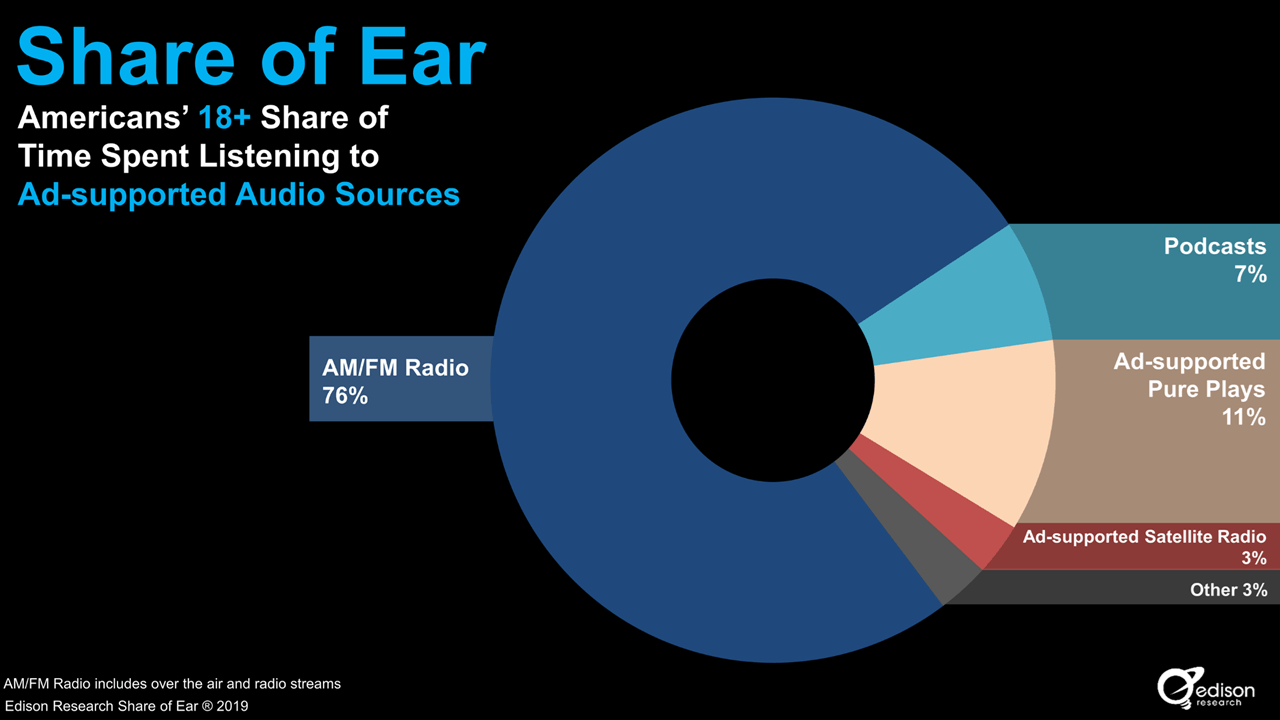
4. ABX: Pharmaceutical AM/FM radio ads test at 90% of the impact of pharmaceutical TV ads for a third of the CPM.
Gary Getto, President and Founder of creative testing firm ABX, presented results from brand new pharmaceutical ad testing. ABX took the audio tracks from sixty second pharmaceutical TV ads and tested them as AM/FM radio ads. The findings were amazing. The “AM/FM radio” ads scored at 90% of the TV ads despite CPMs for TV being three times greater than AM/FM radio.
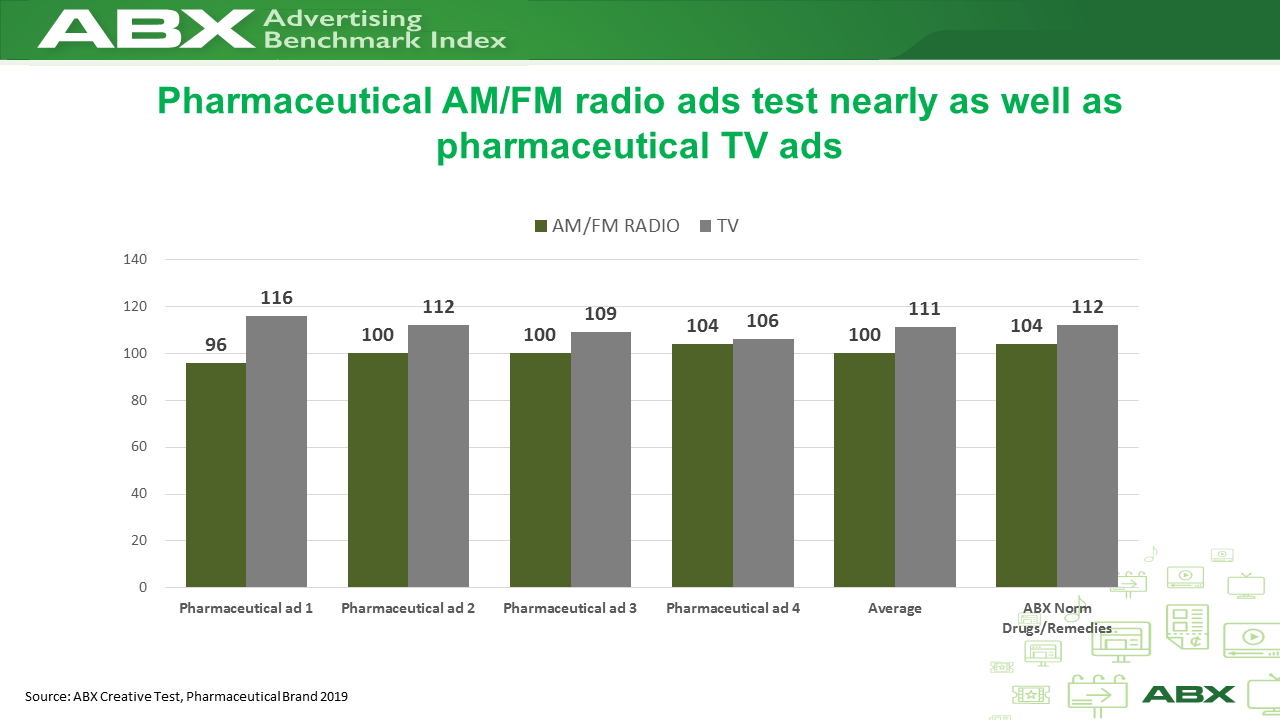
Many pharmaceutical brands steer clear of AM/FM radio since they have no experience with audio ads. They worry that the impact will not be as great as TV creative. ABX’s finding that AM/FM radio pharmaceutical ads perform at nearly the same level as TV ads should prove encouraging to pharmaceutical brands.
5. Nielsen: AM/FM radio makes your TV better – AM/FM radio’s incremental reach to television boosts younger demographics the most.
Tony Hereau, Vice President of Cross Platform Insights, is Nielsen’s newly anointed radio ambassador to major advertisers. Tony presented the results of numerous sales effect studies that measured both TV and AM/FM radio.
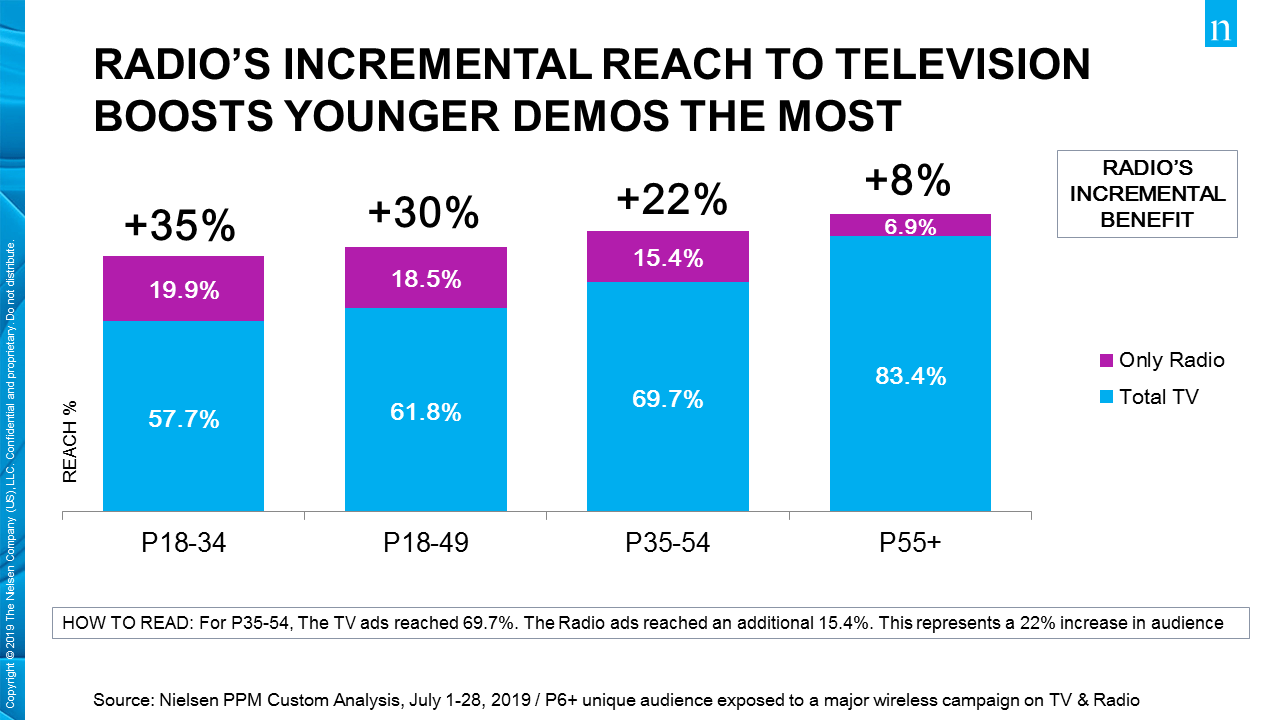
Nielsen’s analysis of a major wireless campaign reveals AM/FM radio added +8% new, different people over the age of 55. Among persons 18-34, AM/FM radio generated a massive +35% lift in incremental audience reach.
Adding AM/FM radio to the media plan adds incremental audiences who are not reached on TV. The younger the demo, the greater the incremental reach lift.
6. Nielsen: A major home improvement retailer found those only reached by AM/FM radio represented 20% of total campaign reach, yet generated 42% of incremental sales lift.
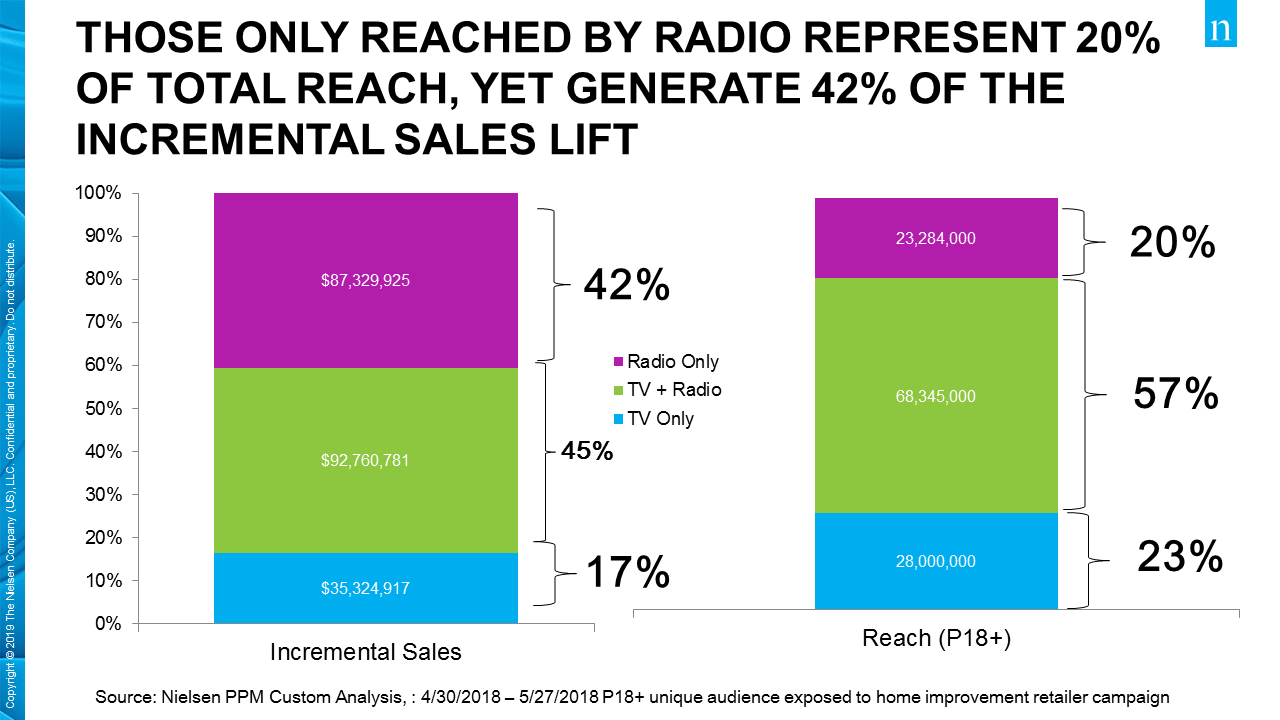
AM/FM radio proved to be a powerful addition to the media plan. Those only reached by TV represented 23% of the reach, but only 17% of the incremental sales lift. Most of the sales effect came from the consumers reached by television and AM/FM radio, proving AM/FM radio makes TV better.
7. Nielsen: A major retailer found that markets with a heavier use of AM/FM radio generated a 9% increase in sales versus other markets.
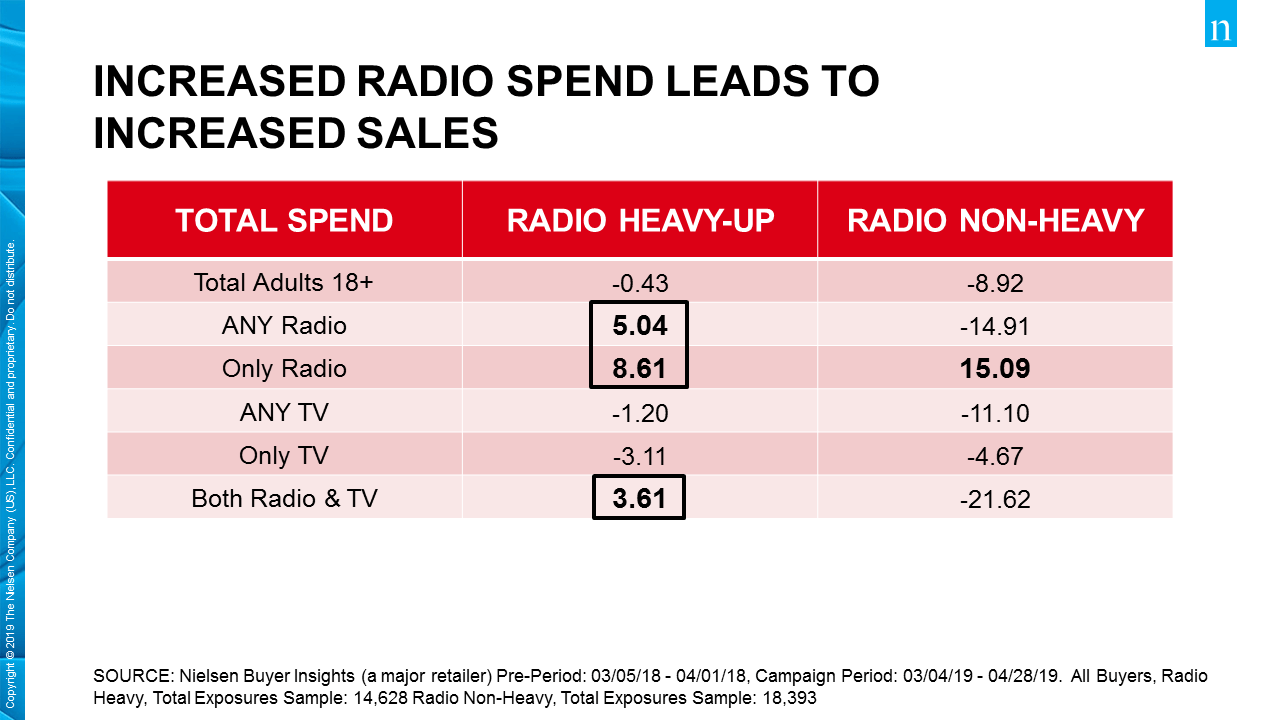
Nielsen matched Portable People Meter ad exposures to credit card spending. In markets where AM/FM radio spend was 2.3X greater, the number of new customers grew and sales soared.
Key panel highlights:
- LeadsRx: iHeartMedia’s auto dealer attribution study of 300+ auto retailers and 1.8 million AM/FM radio ads finds AM/FM radio drives a +17% lift in dealer site traffic.
- LeadsRx: Seven-day campaigns crush three-day flights. Site traffic growth is two times greater from campaigns spread over seven days versus three days.
- Edison Research: AM/FM radio has a 76% share of ad-supported audio.
- ABX: Pharmaceutical AM/FM radio ads test at 90% of the impact of pharmaceutical TV ads for a third of the CPM.
- Nielsen: AM/FM radio makes TV better – AM/FM radio’s incremental reach to television boosts younger demographics the most.
- Nielsen: A major home improvement retailer found those only reached by AM/FM radio represented 20% of total campaign reach, yet generated an astounding 42% of the incremental sales lift.
- Nielsen: A major retailer found that markets with a heavy up in AM/FM radio spend generated a 9% increase in sales versus other markets.
Pierre Bouvard is Chief Insights Officer at CUMULUS MEDIA | Westwood One.
Contact the Insights team at CorpMarketing@westwoodone.com.